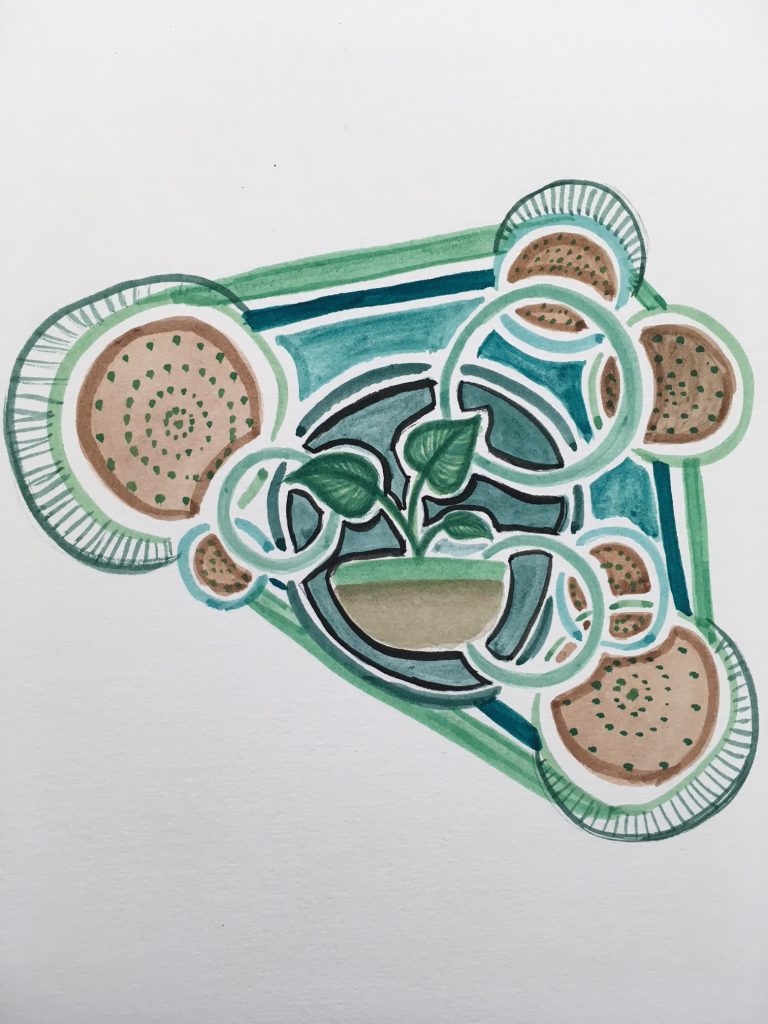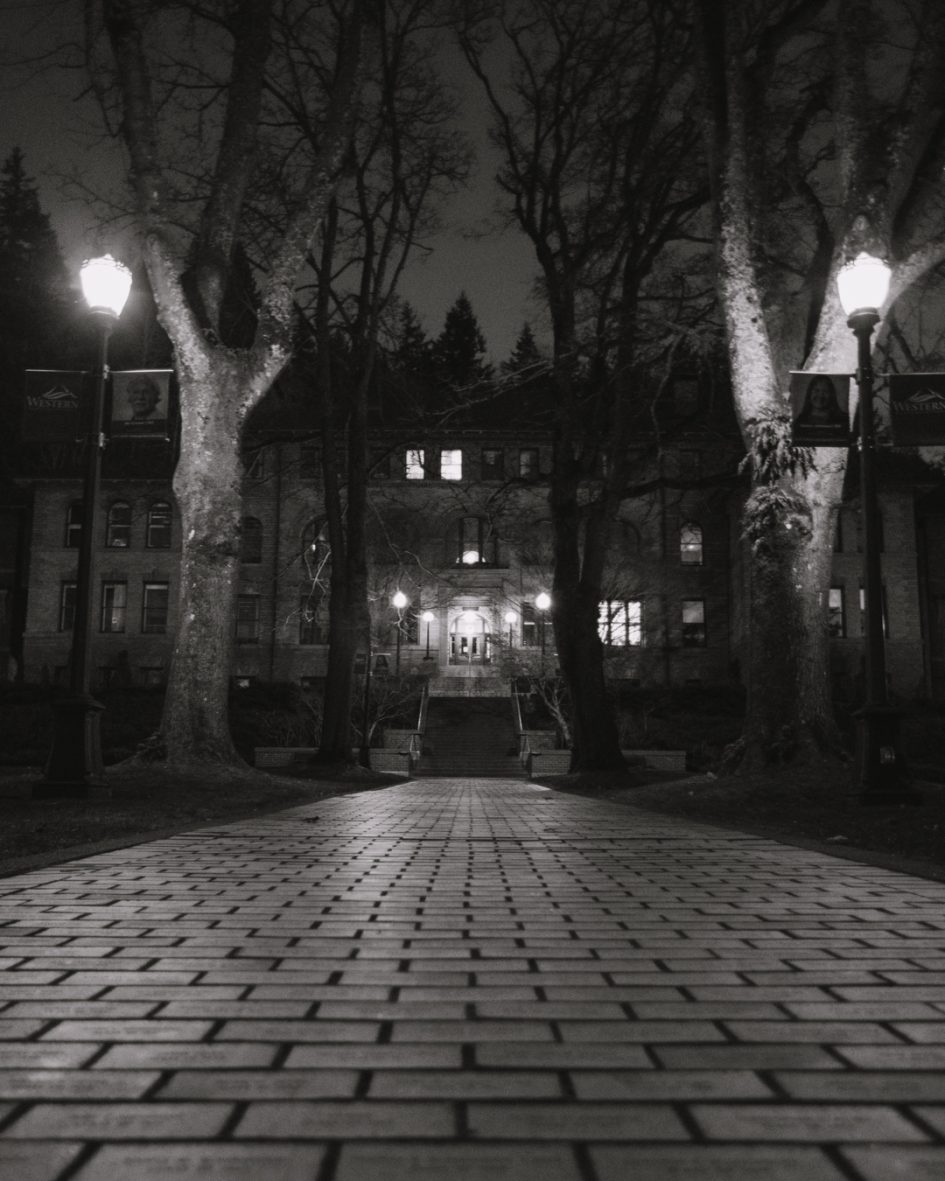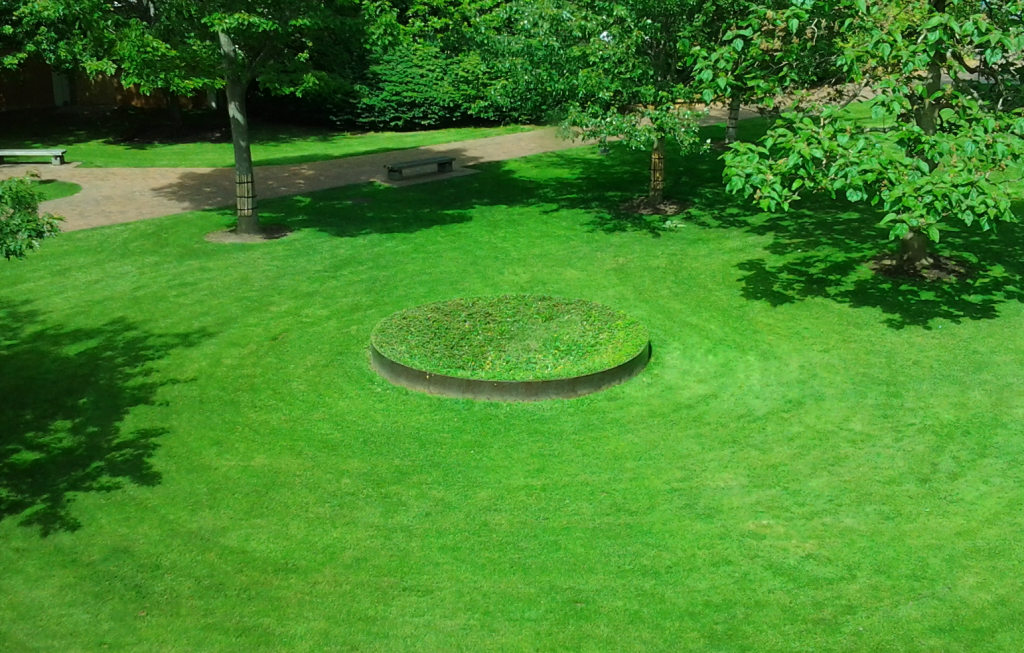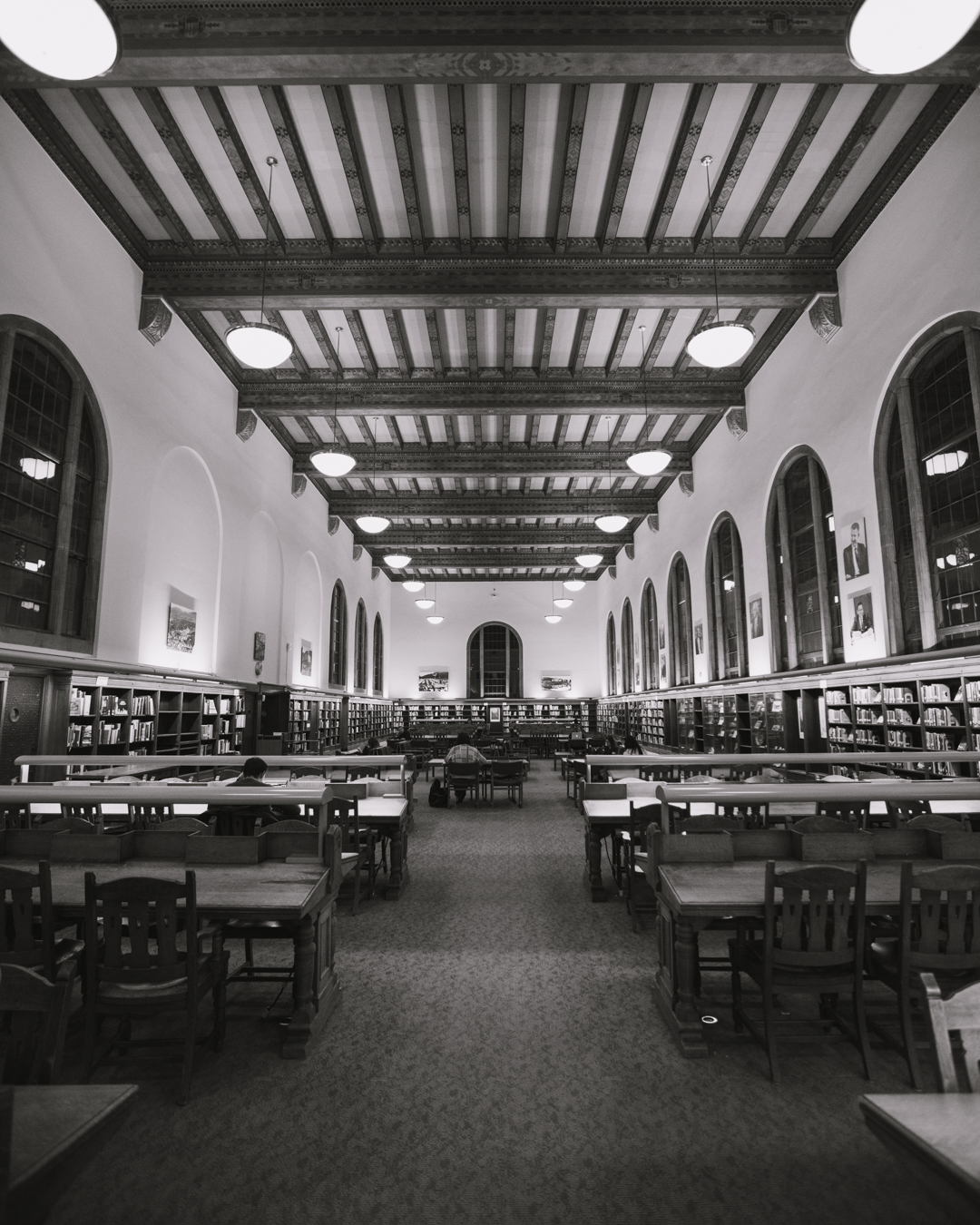Post by Paige Benson, Skylar Kaster, and Norman Rockwell
Meg Webster created Untitled in 1990 and was inspired by Postminimalism, an aesthetic that seeks to go beyond and expand on traditional minimalistic concepts. Land Art was also a big inspiration to Webster throughout most of her work, however this movement hit its prime back in the 1970’s when subjects such as anti-commercialism and organic works resonated with the counterculture movement. Due to Untitled being made in 1990, less counterculture and more hybrid biodesign can be found in its DNA. Webster was more interested in integrating nature into urban environments than rebelling against them. This can be seen by Untitled’s industrial copper ring which forms the outline of the planter.

This piece was inspired by Meg Webster’s sculpture, Untitled. Untitled is a round copper planter filled with plants, and to me it represents the cyclical symbols of nature. The seasons repeat, and things grow back every year without fail – nature is a cycle of life and death. I used greens, browns, and blues, which occur here in this natural environment more than any other color. I employed some design elements here to balance the piece as well. Overall it reveals how Untitled blends in with it’s surrounding pacific northwest environment, by being a perfect circle. – SKYLAR
ABOUT THE ARTIST
Meg Webster is an artist that is heavily influenced by the Land art movement of the 1970s, using natural objects like soil, stone, beeswax, and spices to create her sculptures. Her installations are focused on the environment, and how they interact with the ecosystem around them. The sculpture she has at Western, Untitled, that rests in front of the Mathematics building, follows these rules of math and nature as well. It’s shaped like an inverted cone, and is made from plants that grow naturally around the Pacific Northwest. For a lot of her sculptures, Webster is quoted to create “interactive installations in which the viewer experiences the piece by walking on or around the sculpted ‘ecosystem’” (Guggenheim). They are pieces that she wants to blend in with its environment, and yet they also have a “man-made” feel about them, acting as if they have always been a part of the ecosystem.
THE TIME BEHIND “UNTITLED”
In the early 90’s, youth subcultures “which were surging with a noticeable energy and vitality” took a lot of attention, most notably giving rise to photographers such as Wolfgang Tillmans and Larry Clark (Allenchey, 2013). The energy of subcultures was echoed by the reemergence of punk rock to the mainstream with bands like Green Day. At this time, subjects of sex and identity politics gained more prominence in galleries following the AIDS crisis and rise of LGBT groups. Technology was also a prominent influence on early 90’s as computers began to be more commercially available to the masses. Most of popular art and culture seemed to embrace technology, opposed to questioning it and, again, this movement is seen by Untitled’s hybrid bio-design; a theme seen in works such as Plant Fiction that “radically rethink our relationship with nature, culture, and city” (Myers, 2012).

Untitled by Meg Webster is a piece that embodies an earthy nature mixed with a mathematical tune. In my piece I wanted to emulate that by creating a triangular shape close to the cone-like nature of the sculpture. The colors are those of the plants that grow around Bellingham, the dogwood flowers giving a sense of placement in nature. The triangle points downwards, indicating movement as the sculpture does, moving the eyes downwards like the water would flow in Untitled. – PAIGE
DETAILS
In Untitled, there is an amazing contrast between nature and man-made creations. In all of the pieces, along with Untitled, we strive to emulate those emotions and how they connect with the piece. Meg Webster states on her personal website that “I am a sculptor who makes minimal art with natural materials to be directly perceived by the body”; and then proceeds to utilize the Land Art movement, and all the materials that go along with it. Sand; stone; rock; nature. Webster creates and demonstrates her love for the environment via all these sculptures, including Western’s own Untitled. In our pieces we also want to follow that.
In Paige’s piece, she wants to mix the idea of mathematics and nature, following Webster’s idea of entering a space. The eyes follow the triangle through the top and down to the point, as the sculpture does.
In Skylar’s piece, she speaks about how the “seasons repeat, and things grow back every year without fail – nature is a cycle of life and death.” Using all sorts of colors that she has seen in nature and around the sculpture.
In Norman’s piece, he explores the relationship between man made and organic matter as Webster does in her combining of iron and plant life. By using the element of symmetry in his photos, Norman illustrates mankind’s resistance of nature’s inherant reversion to disorder.
Untitled is a piece that is generally not considered by the people who walk by it daily on campus. Webster’s idea was to blend nature and math, stones and thought, and just a general idea about change in the environment alongside idealistically immortal human creation. Opposites in theory, but when combined they create something truly special. Untitled is something that a person has to truly look at to understand, and that is something that not a lot of people get to do. Webster’s art is inspiring to other artists, including our art, and we strive to match the balance she creates in our own pieces. Nature has always been a part of the human experience, but so has math, in it’s own sense. Nature is constantly creating that perfect golden ratio, a challenge people strive to emulate.
Bibliography:
Allenchey, Alex. “How the Upheaval of the ’90s Revolutionized the Art World.” Artspace,
26 Feb. 2013,
www.artspace.com/magazine/art_101/art_market/the_art_world_in_the_90s
Cooper, Paula. “Meg Webster.” Meg Webster – Selected Works | Paula Cooper Gallery, Paula Cooper Gallery, www.paulacoopergallery.com/artists/meg-webster/selected-works.
“Earth Art Movement, Artists and Major Works.” The Art Story,
www.theartstory.org/movement-earth-art.htm.
“Meg Webster.” Guggenheim, www.guggenheim.org/artwork/artist/meg-webster.
Myers, William, and Paola Antonelli. Bio Design: Nature Science Creativity. Thames &
Hudson Ltd, 2014.
Sisson, Patrick. “The Simple, Stunning Organic Sculptures of Artist Meg Webster.”
Curbed, Curbed, 2 June 2016, www.curbed.com/2016/6/2/11838226/landscape-artist-meg-webster-sculptures-works.
Webster, Meg. “Meg Webster.” Meg Webster, megwebsterstudio.com/.














Leave a Reply